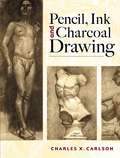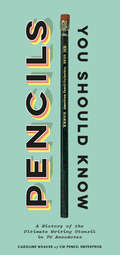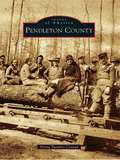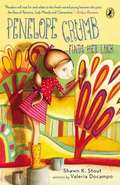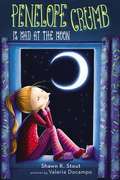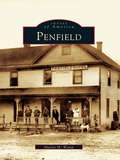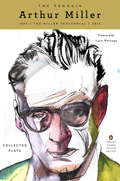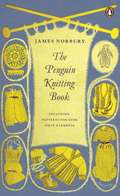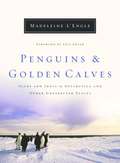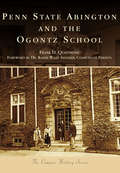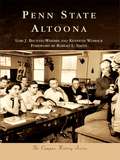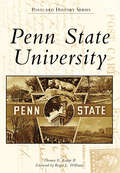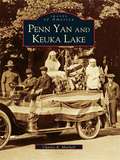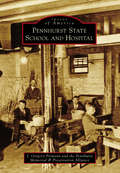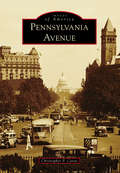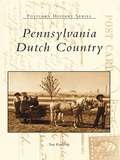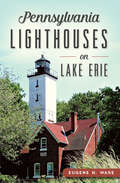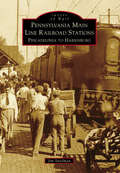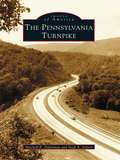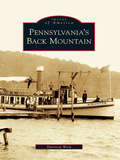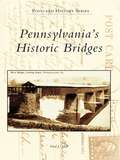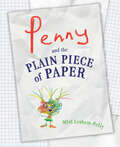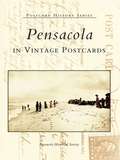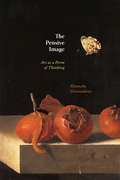- Table View
- List View
Pencil, Ink and Charcoal Drawing: Four Volumes Bound as One
by Charles X. CarlsonThis original compilation gathers together four of Charles X. Carlson's finest art instruction books and presents them in one comprehensive volume. A well-known artist, author, and teacher, Carlson offers clear, uncomplicated methods of drawing for aspiring artists at every level. Chock-full of step-by-step illustrations, this compendium expertly covers the fundamentals of drawing figures, portraits, still-lifes, and landscapes for a wide variety of mediums. An all-in-one guide for art students, it includes: Simplified Ink, Pen and Brush Drawing opens the door to a number of drawing techniques, including spattering, stippling, cross-hatching, accented strokes, and the use of chalk and crayon. Simplified Drawing teaches artists the ABCs of free-hand drawing and features the basic principles of an object's construction using the easy "block method." The Simplified Essentials of Charcoal Drawing discusses charcoal materials and how to use them, and includes various techniques of charcoal drawing with application to cast, life, and outdoor sketching. Simplified Pencil Drawing presents the various methods of pencil drawing, step by step, while building students' knowledge of the subject and encouraging them to develop their own individual pencil techniques.
Pencils You Should Know: A History of Ultimate Writing Utensil in 75 Anecdotes
by Caroline WeaverPencils You Should Know traces the evolution of pencils over time and across the globe. From the humble, handcrafted pencil of the 19th century to the novelty writing implement of the 1990s, each object in this book tells a different story.This book features a selection of 75 modern and vintage pencils curated by pencil powerhouse Caroline Weaver, owner of legendary New York pencil emporium CW Pencil Enterprise. Pencil fanatics will find old favorites here—the original Blackwing 602 puts in an appearance, of course—and make exciting new discoveries, too.• Vintage pencils and accessories are photographed against vibrant, colorful backgrounds and accompanied by Weaver's insightful commentary.• A love letter to one of the most important inventions in human historyThis supremely charming book celebrates the enduring magic of the pencil.Trace the history of the pencil over time and across the globe, and discover everything you need to know about this simple yet ingenious invention. • A great book for pencil collectors, admirers, historians, artists, writers—anyone who gets excited about the new Palomino Blackwing, a perfectly sharpened No. 2 Ticonderoga• Fans of The Pencil by Henry Petroski, How to Sharpen Pencils by David Rees and John Hodgman, and The Pencil Perfect by Caroline Weaver will want this in their collection.The perfect book for pencil devotees, analog and vintage ephemera lovers, designers, and fans of CW Pencil Enterprise
Pendleton County (Images of America)
by Penny Tuemler ConradPendleton County, carved from parts of Bracken and Campbell Counties in 1798, sits halfway between Cincinnati, Ohio, and Lexington, Kentucky. The Pendleton name came from the early group of Virginia settlers who founded Falmouth, the county seat, at the confluence of the Licking Rivers. They selected this name to honor Edmund Pendleton, a Virginia statesman and surveyor of Kentucky. The landscape offered gently rolling hills, the two Licking Rivers, and their tributaries as a place to settle and prosper. Within the valleys and rich bottomlands of these hills, the communities of Falmouth, Butler, DeMossville, Catawba, Goforth, McKinneysburg, Boston Station, Morgan, Flour Creek, Mt. Auburn, and all the small business centers grew and prospered. Pendleton County has provided their community, state, and country with citizens who served as legislators, ministers, soldiers, education leaders, entertainers, business entrepreneurs, and a Nobel Prize-winning scientist.
Penelope Crumb Finds Her Luck
by Valeria Docampo Shawn Stout"Kids who have outgrown the Junie B. Jones series will enjoy Penelope's equally comical narrative style." --BCCB In the third book in this hilarious, endearing series, all Penelope Crumb wants is to be someone's "Favorite." She'd thought she was her Grandpa Felix's Favorite, and her mom's Favorite, and her friend Patsy Cline's Favorite, but she's starting to realize that maybe she's not. And it's all The Bad Luck's fault. So since Penelope's a superb artist, she comes up with a plan--she's going to be the boss of the mural her school is making at the Portwaller's Blessed Home for the Aged, which will make her into everyone's Favorite. And maybe it'll frighten The Bad Luck away. But things don't quite go as planned there either. And when an old woman named Nila promises to help Penelope find her luck so everyone will like her again, things get even worse! In the end, Penelope finds out that friendships aren't about luck--and that it doesn't matter if you're anyone's Favorite when there are tons of people who love you. In a book that's equal parts humor and heart, it's clear to see why young readers will count Penelope as one of their Favorites. Look Who Loves Penelope Crumb! [STAR] "Penelope Crumb . . . channels the quirkiness of Ramona Quimby and the detective skills of Cam Jansen . . . Penelope will delight children and parents alike."--Shelf Awareness "Penelope is an intrepid heroine with a unique and frequently amusing narrative voice . . . kids who have outgrown the Junie B. Jones series will enjoy Penelope's equally comical narrative style."--The Bulletin of the Center for Children's Books "Readers will root for and relate to this fresh-voiced young heroine who joins the likes of Ramona, Judy Moody and Clementine."--Kirkus Reviews
Penelope Crumb is Mad at the Moon
by Shawn StoutPenelope Crumb is not having a very good week. First she accidentally comes to school dressed as an elephant (dress like an animal day is next week), and then in gym class she's forced to square dance. With a boy who is known as Lippy Gordon because of how sweaty his lip is. All the time. Penelope is mortified. And then is extra mortified when she discovers that Lippy doesn't want to dance with her either! When Grandpa tells Penelope that he sings to the moon when he's having trouble, Penelope grabs onto this plan. But sometimes you need more than the moon to fix things. Another sweet and funny Penelope book. Equal parts humor and heart, this is a character not to be missed. Perfect for fans of Ramona Quimby, Judy Moody and Clementine, and for fans who have just outgrown Junie B. Jones and Katie Kazoo.
Penfield
by Martin M. WampPenfield began as a milling town in the early 1800s, evolved into a farming community by the 1850s, and grew into one of Rochester's finest suburbs in the 1900s. Within the pages of Penfield are stories of founder Daniel Penfield and why, as a successful merchant and landowner, he left eastern New York to settle in an uninhabited wilderness; of twelve-year-old "Little Nellie" Williams, who operated the town's newspaper during the Civil War; of Almon Strowger, the inventor of the dial telephone switch; and of Timothy and Lydia Bush, direct ancestors of President George W. Bush. One of the only remaining mud houses in New York State still stands in Penfield; it and many other early structures are listed on the National Register of Historic Places.
The Penguin Arthur Miller
by Lynn Nottage Arthur MillerTo celebrate the centennial of his birth, the collected plays of America's greatest twentieth-century dramatist in a beautiful bespoke hardcover edition In the history of postwar American art and politics, Arthur Miller casts a long shadow as a playwright of stunning range and power whose works held up a mirror to America and its shifting values. The Penguin Arthur Miller celebrates Miller's creative and intellectual legacy by bringing together the breadth of his plays, which span the decades from the 1930s to the new millennium. From his quiet debut, The Man Who Had All the Luck, and All My Sons, the follow-up that established him as a major talent, to career hallmarks like The Crucible and Death of a Salesman, and later works like Mr. Peters' Connections and Resurrection Blues, the range and courage of Miller's moral and artistic vision are here on full display.This lavish bespoke edition, specially produced to commemorate the Miller centennial, is a must-have for devotees of Miller's work. The Penguin Arthur Miller will ensure a permanent place on any bookshelf for the full span of Miller's extraordinary dramatic career.The Penguin Arthur Miller includes: The Man Who Had All the Luck, All My Sons, Death of a Salesman, An Enemy of the People, The Crucible, A View from the Bridge, After the Fall, Incident at Vichy, The Price, The Creation of the World and Other Business, The Archbishop's Ceiling, The American Clock, Playing for Time, The Ride Down Mt. Morgan, The Last Yankee, Broken Glass, Mr. Peters' Connections, and Resurrection Blues.From the Hardcover edition.
The Penguin Knitting Book
by James NorburyThe Penguin Knitting Book by James Norbury is a charming how-to-knit classic packed with delightfully vintage advice.Knitting fills a fascinating page in the human story. I know of no home-craft that enjoys the universal popularity of hand-knittingJames Norbury's The Penguin Knitting Book, first published in 1957, is a how-to guide for the experienced knitter as well as the beginner. Full of wit and charm as well as tips and techniques for the contemporary knitter, The Penguin Knitting Book entertainingly illustrates all things vintage in the world of wool.Along with telling you how to knit, The Penguin Knitting Book includes original vintage patterns for every member of the family. Babies' coats, pullovers for father, sweaters for the teenager, dresses, jumpers, coats and cardigans, you will find them all in this charming aid to better knitting.'James Norbury was the strongest single influence in British knitting during the twenty-five years after the Second World War' Sir Bishop Richard Rutt, author of A History of Hand Knitting'[In the late 1960s] there was a chap called James Norbury, who had his own knitting show on the BBC. I sat in on some of the programmes, and good stuff it was, too. I learned lots of racy stuff about 'knit one, purl one'' Sir David Attenborough'Knitting is the saving of a life' Virginia WoolfJames Norbury wrote The Penguin Knitting Book in 1957. He travelled extensively throughout the world, studying every aspect of the knitter's craft. A knitting historian, teacher and designer as well as a television star on his own BBC knitting show, he was Chief Designer for Patons and one of the foremost authorities on the history of knitting.
Penguins!: Photographs And Facts From One Man's Search For The Penguins Of The World (Step into Reading)
by David SalomonPenguin lovers and young nonfiction fans will enjoy following one penguin couple through their efforts to raise a family of chicks in this engaging Step into Reading Science Reader.Did you know that penguins have feathers but don&’t fly? Or that their eggs are guarded by the daddy penguin? Or that they dive in the ocean for their food? Discover these facts and more, along with brilliant photographs of chinstrap penguins in Antarctica, in this captivating nonfiction leveled reader. These unusual birds will waddle into children&’s hearts while they decode the simple text. Great for confident or reluctant readers. Step 2 Readers use basic vocabulary and short sentences to tell simple stories. For children who recognize familiar words and can sound out new words with help.&“The Step into Reading series makes integrating reading into the curriculum so much easier. The nonfiction titles are perfect for teaching reading and language arts skills, while covering science and social studies content simultaneously!&” —Lisa Laake, second-grade Language Arts teacher
Penguins and Golden Calves
by Madeleine L'EngleDespite protests and warnings from friends and family, author Madeleine L’Engle, at the age of seventy-four, embarked on a rafting trip to Antarctica. Her journey through the startling beauty of the continent led her to write Penguins and Golden Calves, a captivating discussion of how opening oneself up to icons, or everyday “windows to God,” leads to the development of a rich and deeply spiritual faith. Here, L’Engle explains how ordinary things such as family, words, the Bible, heaven, and even penguins can become such windows. She also shows how such a window becomes an idol–a penguin becomes a “golden calf”–when we see it as a reflection of itself instead of God. With delightful language, insightful metaphor, and personal stories, L’Engle brings readers to a deeper understanding of themselves, their faith, and the presence of God in their daily lives.
Penn State Abington and the Ogontz School (Campus History)
by Frank D. Quattrone Chancellor Emerita Dr Karen SandlerAnyone traversing the hilly, tree-lined paths of Penn State Abington would be hard-pressed to imagine the college in its first incarnation. Among the most diverse of Penn State University�s commonwealth campuses today, the college�s lineage dates to 1850 as the Chestnut Street Female Seminary in Philadelphia. This pictorial history traces its evolution from a private finishing school for affluent girls to an affordable public college that draws students from 17 states and 29 countries. Among the celebrated figures who contributed handsomely to the school�s prestige and growth are Civil War financier Jay Cooke, who transformed his suburban Ogontz mansion into the renamed Ogontz School for Young Ladies; Abby A. Sutherland, the school�s most influential principal/president, who astutely moved the school to a handsome tract of land in Abington Township, which she donated to Penn State University in 1950; and famed aviator Amelia Earhart. In the past two decades, under the direction of Dr. Karen Wiley Sandler, chancellor emerita, the college has become the thriving degree-granting residential institution that it is today.
Penn State Altoona
by Kenneth Womack Robert L. Smith Lori J. Bechtel-WherryFounded in 1939, Penn State Altoona began its life as the Altoona Undergraduate Center, owing its genesis to an inspired group of local citizens who built, financed, and nurtured the college through the economic woes of the Great Depression, an enrollment collapse engendered by World War II, and the rise and fall of the region's railroad fortunes. After relocating to the site of an abandoned amusement park in the late 1940s, Penn State Altoona enjoyed a rapid postwar growth spurt that culminated in 1997 with its newly minted charter as a four-year college in the Penn State University system. Using lively period photographs from the school's archives, Penn State Altoona chronicles the school's transformation into a flourishing teaching and research institution of national acclaim.
Penn State University (Postcard History)
by Roger L. Willams Thomas E. Range IIPenn State University was founded in 1855. Then known as the Farmers' High School of Pennsylvania, the 400-acre campus had only one main building. With almost 100,000 current students (including students at the Commonwealth Campuses) and having the largest dues-paying alumni association in the world, Penn State continues to be a world leader in education. Since its founding, picture postcards have been published to showcase the buildings and highlight the student activities while documenting the school's narrative.
Penn Yan and Keuka Lake: Penn Yan, Hammondsport And The Heart Of The Finger Lakes (Images of America)
by Charles R. MitchellPenn Yan and Keuka Lake share a history that is rich in architecture, industry, and tradition. Penn Yan was established in 1833 as a village on the edge of New York's Keuka Lake; the unique name was chosen because the first people to settle in the village were comprised of Yankees from New England and Pennsylvania. The town's name is just on e of the many distinctive aspects of Penn Yan and Keuka Lake's intriguing past; the town has long had a commercial district, much of which occupies the historic district today. Still standing in the historic district are many of the elegant houses that were constructed in the nineteenth century, reflecting a time when Penn Yan experimented with several architectural styles. Mills, railroads, and steam boat businesses once thrived throughout the area.
Pennhurst State School and Hospital (Images of America)
by J. Gregory Pirmann Pennhurst Memorial & Preservation AllianceFor nearly 80 years, Pennhurst State School and Hospital was a reminder of how society viewed and treated people with intellectual disabilities. Over its existence, Pennhurst was home to more than 10,600 people. Many spent decades there, working to keep the institution running by performing various jobs. While some enjoyed the lives they had fashioned for themselves at Pennhurst, for many others, life there was crushing. Pennhurst also played a central role in the lives of its employees and in the rural Pennsylvania community where it was located. Controversy plagued the institution for its entire existence, and it is remembered primarily as a place where bad things happened. However, it was much more than that. This book provides a window into that separate world, reminding those who were part of it of what they saw and did there and giving those who know only what they have heard or seen a different picture of what Pennhurst truly was.
Pennsylvania Avenue (Images of America)
by Christopher P. CavasThe Grand Avenue, America's Main Street, a National Embarrassment--Pennsylvania Avenue has been known by these names and more since it was laid out across farmland in the 1790s. From the beginning, the one-mile stretch between the Capitol building and the White House was intended to be a symbolic link between the key branches of government, but over more than two centuries, it has witnessed grandeur and squalor, national pride and neglect, and crowds full of celebration and rage. While the pillars of government at either end have stood watch, the avenue has seen buildings, institutions, and neighborhoods rise, prosper, decay, and fall. A grand marketplace, a major train station, dozens of hotels and restaurants--all thrived, yet only a handful remain. Once a teeming city thoroughfare, then a bland, nearly lifeless area dominated by hulking federal buildings, the avenue today is regaining some of the vitality that marked its earlier years even as it remains one of the nation's best-known streets.
Pennsylvania Dutch Country
by Tom Range Sr.The people of the Pennsylvania Dutch Country, the "plain people," avoid manifestations of modern culture, preferring to live a simple life in accordance with their interpretation of the Bible. The Old Order Amish are considered the most fundamentalist, shunning electric appliances, gasoline-powered vehicles, modern dress, and engaging primarily in agriculture. Since the Pennsylvania Dutch Country is a favored vacation destination, postcard publishers have produced scenes of the everyday life of the plain people since the beginning of the twentieth century. More than two hundred of these postcards are meticulously arranged and described in Pennsylvania Dutch Country.
Pennsylvania Lighthouses on Lake Erie (Landmarks)
by Eugene H. WareFour lighthouses remain in Pennsylvania, and Lake Erie is home to three. In 1818, Old Presque Isle Light became the first United States lighthouse built on the lake's shore. But a need for even more navigational assistance gave birth to the North Pierhead Lighthouse forty years later. The Presque Isle Light Station first shined on Lake Erie in July 1873. Thanks to the guidance from these landmarks, Erie's port is one of the busiest in the Great Lakes. Author Eugene Ware offers an edifying history of Erie Harbor lights.
Pennsylvania Main Line Railroad Stations: Philadelphia to Harrisburg (Images of Rail)
by Jim SundmanIn 1857, the Pennsylvania Railroad (PRR) took over Pennsylvania's Main Line of Public Works, a state-owned railroad and canal system built in the 1830s. Costly to build and maintain, and never attracting the traffic needed to sustain it, the state was eager to let it go. Keeping the rail portion and combining it with its own lines, the PRR ultimately developed a well-built and well-run rail line from Philadelphia to Pittsburgh all while keeping the "main line" moniker. The eastern section between Philadelphia and Harrisburg was especially successful, particularly after the railroad built new communities along the line that were at first summer destinations and later year-round homes for daily commuters. Other towns and cities along the main line had a strong industrial or agricultural base needing rail access, and many of these communities had attractive train stations. Images of America: Pennsylvania Main Line Railroad Stations: Philadelphia to Harrisburg documents many of these passenger stations through vintage photographs and other images. Most are gone, but fortunately some still stand and are in use today.
Pennsylvania Turnpike, The (Images of America)
by Mitchell E. Dakelman Neal A. SchorrThe Pennsylvania Turnpike is one of the best-known highways in the United States. Most Pennsylvania Turnpike travelers are unaware that its construction was inspired by the route of the never completed South Pennsylvania Railroad. In the 1930s, men of great vision conceived, planned, and built the nation's first long-distance superhighway using the abandoned railroad's partially finished tunnels as its foundation. Originally predicted to be a financial failure, the project was a tremendous success, and the turnpike came to be known as the World's Greatest Highway. Over the years, the Pennsylvania Turnpike was expanded and improved, laying the groundwork for the nation's Interstate Highway System. The Pennsylvania Turnpike draws from the extensive photograph collection in the Pennsylvania State Archives. Many were taken by photographers hired by both the Pennsylvania Turnpike Commission and its contractors, and most have never been published previously.
Pennsylvania's Back Mountain
by Harrison WickNestled behind the Endless Mountains in Luzerne County, the rolling hills of the Back Mountain are a scenic blend of Pennsylvania's natural beauty and history. Adjacent to the anthracite coal regions of Luzerne and Lackawanna Counties, the Back Mountain includes Kingston Township, Trucksville, Shavertown, Dallas, Huntsville, Lehman, and Harvey's Lake. Historically the area offered many forms of recreation and entertainment, which brought tourists from all over the Northeast. Harvey's Lake is the largest natural lake in Pennsylvania, and it became a major resort destination in the early 20th century. Pennsylvania's Back Mountain is a compilation of rare photographs documenting this historic community and revealing a bygone era of amusement parks, hotels, railroads, and steamboats.
Pennsylvania's Historic Bridges
by Fred J. MollPennsylvania's Historic Bridges examines the development of different types of bridge structures across Pennsylvania through the world of postcards, many of which are from the early 1900s. The structures featured are constructed from various materials and in a multitude of styles. Also found within these pages are several postcards of pedestrian bridges, canal bridges, trolley bridges, railroad bridges, and an aqueduct.
Penny and the Plain Piece of Paper
by Miri Leshem-PellyOne little doodle girl takes control of her own creative destiny in this funny and imaginative book perfect for fans of Harold and the Purple Crayon!Penny lives on a plain piece of paper, with just one problem--she's bored. There's nothing to do, no one to talk to, not a single way to keep herself entertained! Not one to wallow, Penny makes a decision: it's high time she ventured out into the world and explored other types of paper. But when she's not serious enough for the newspaper, not angular enough for the graph paper, and not repetitive enough for the wrapping paper, Penny doesn't know where she belongs. With some help from the friends she's met along her journey, though, she comes up with the perfect paper plan for herself.In this fun and funny book about fitting in and finding home, imagination wins the day!Praise for Penny and the Plain Piece of Paper:* "Penny's journey through varying visual styles is bright, fascinating, and funny . . . Irresistibly touchable." --Kirkus Reviews, *STARRED REVIEW*
Pensacola in Vintage Postcards (Postcard History)
by Pensacola Historical SocietyAlthough Pensacola was permanently settled in 1698, not until the harvesting of yellow pine trees between 1870 and 1910 did the city begin to grow and prosper. During this golden era, a building boom transformed the city into a vibrant seaport and economic center. Pensacola's natural deep water harbor attracted merchant ships, and railroads increased access for goods and human transportation. Between 1825 and 1844, the Redoubt, the Navy Yard, and Forts Barrancas, Pickens, and McRee were constructed. Pensacola's many nicknames included "Cradle of Naval Aviation," "Annapolis of the Air," and "Mother-in-law of the U.S. Navy" since a large number of local women married navy men.
The Pensive Image: Art as a Form of Thinking
by Hanneke GrootenboerWhile the philosophical dimension of painting has long been discussed, a clear case for painting as a form of visual thinking has yet to be made. Traditionally, vanitas still life paintings are considered to raise ontological issues while landscapes direct the mind towards introspection. Grootenboer moves beyond these considerations to focus on what remains unspoken in painting, the implicit and inexpressible that manifests in a quality she calls pensiveness. Different from self-aware or actively desiring images, pensive images are speculative, pointing beyond interpretation. An alternative pictorial category, pensive images stir us away from interpretation and toward a state of suspension where thinking through and with the image can start. In fluid prose, Grootenboer explores various modalities of visual thinking— as the location where thought should be found, as a refuge enabling reflection, and as an encounter that provokes thought. Through these considerations, she demonstrates that art works serve as models for thought as much as they act as instruments through which thinking can take place. Starting from the premise that painting is itself a type of thinking, The Pensive Image argues that art is capable of forming thoughts and shaping concepts in visual terms.
